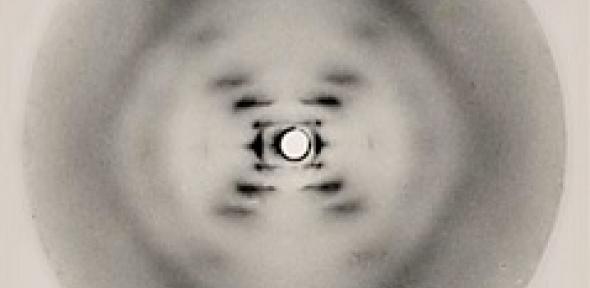
A graduate student view of the Crick Memorial Talks…
Even in Cambridge it’s not often that you walk into a room knowing that there are multiple Nobel laureates present. In addition, with the talks having been labelled as the last decennary celebration of Watson and Crick’s discovery of the structure of DNA where colleagues from the time would be gathered to speak, there was certainly an atmosphere that mirrored the historical significance as people streamed into the Babbage lecture theatre, opposite the old Cavendish laboratory.
As an audience we were quickly and vividly brought into the life of Francis Crick; a lively and energetic scientist whose early academic achievements were good but never exceptional. He worked on problems such as the viscosity of water, which he assessed as “The dullest problem imaginable” but was always driven by the question “What is Life” as posed by Erwin Schrödinger. It seems through shear enthusiasm and persistence (and an element of competitive desperation in the Cavendish laboratory to beat Linus Pauling at Caltech to the structure) he eventually found himself able to work on the problem of the structure of DNA. I suppose the rest, you could say, is history.
The passion to answer such fundamental questions at that time was clear and with a year left to go on my Ph.D., I couldn’t help wondering what people of my generation could discover to contribute in an equivalent manner to the postdoctoral researcher and graduate student that we were hearing about. James Watson quoted the same book by Schrödinger as his motivation to come to Europe and eventually join pursuits with Crick, and as the speakers told us their stories from the time of this discovery, which continues to transform science and technology, the famous names that came up were remarkable. Not just the more obvious ones such as Brenner, Todd, L. Bragg and those mentioned above but also others like Bohr and Fermi. It was striking how the discovery was driven by a synergism of collaboration and competition and fundamentally a desire for knowledge and understanding, not for an outcome to commercialise. Dunitz said that when they were first seeing the results none of them conceived of the impact that the discovery would have on science but they did all know that it was exciting, significant and that the solution was right.
Whilst Venki Ramakrishnan’s talk showed how the legacy of the discovery continues in some similarly phenomenal research, I was still left wondering whether the research environment we find ourselves in today is always asking the right questions for our problems. Dunitz also said “If we had been smarter and thought about it in greater clarity we might not have solved the structure but seen that this was a code”. However, by solving the structure, the code logically followed. Perhaps sometimes we all need to worry a little less about trying to find the code and make sure that we do find a structure. One thing is for certain, I need to read some more books by the eminent scientists of our day.
Tom Scrase, 3rd year Chemistry PhD student, Gonville and Caius, College
A recording of all the talks may be found by clicking here.
